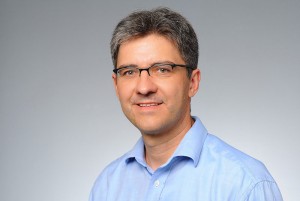About FOR 2240

Department of Ophthalmology, University of Cologne

The University of Cologne, established in 1388, is one of the largest German universities and one of eleven German elite universities. The Medical Faculty has two Max Planck Institutes for high-profile basic science on campus and has its research focus on age-related diseases, inflammation and regeneration. There are several excellence clusters and priority research groups of the German Research Foundation (DFG) on site. The two Max Planck Institutes in age-related medicine and regeneration allow for ample basic science cooperation options. The Dept. of Ophthalmology is one of the largest in Germany with the highest number of inpatient treatments in 2014. The hospital comprises more than 70 beds and more than 6500 inpatients per year. International areas of expertise are corneal transplant surgery (DMEK/DSAEK/DALK), glaucoma surgery, vitreoretinal surgery, strabismology and tumor therapy. The Department currently performs the highest number of lamellar minimally invasive corneal transplants in Germany and also has a strong expertise in artificial corneal transplantation (www.biocornea.eu). AMD treatment and research together with the EUGENDA database is another important focus. Among all University Eye Hospitals in Germany, the most glaucoma surgeries are performed in Cologne.
The Department has a strong focus on clinical and experimental imaging and on translational research and comprises 37 full time physicians and scientists. There are two reading centers for phase II-IV studies and one clinical trial center in the department with over 15 ongoing phase II-IV clinical trials. The research is funded by the German Research Foundation (DFG) via the recently established priority research unit FOR 2240 (“(Lymph)angiogenesis and cellular immunity in inflammatory diseases of the eye”) , as well as by two EU research grants (COST Action BM1302 “Joining Forces in Corneal Transplantation” is chaired in Cologne by Prof. Cursiefen; the reading center for EU FP7 STRONG Study is in Cologne), by the Bayer Graduate School in Pharmacology, by DAAD, ProRetina and by ample support from industry and private foundations. The Chair in Experimental Immunology of the Eye (Prof. Langmann) was endowed by the Stock Foundation, Cologne. Third party funding in the last 3 years was more than 6 million euros. There is access to animal care facilities in house and on campus and the research area is more than 300 square meters. The department published more than 80 original manuscripts last year with an overall impact factor of more than 250. A German-language overview on the FOR 2240 from May 2017 can be found here.
Three thematic areas
lymphatic vessels
Lymphatic vessels are an important part of the “afferent” arm of inflammatory and immune responses. Via lymphatic vessels, antigen-presenting cells and antigens from the periphery enter the regional lymph nodes to induce local immune responses.
The developmental and regulatory mechanisms of lymphatic vessels remained elusive for a long time. Only since the end of the 1990s, when new specific markers for lymphatic endothelium were discovered, a renaissance in lymphangiogenesis research started, and lymphatic vessels are now being recognized as key players in acute and chronic inflammatory responses, immune reactions after transplantation, blood pressure regulation and tumor metastasis.
Antilymphangiogenic therapeutic approaches are now in principle capable of improving transplant survival and of preventing tumor metastasis. However, many details of the interaction of inflammatory cells with lymphatic vessels, their influence on the maturation of dendritic cells and the mechanisms of vessel maturation are poorly understood. Since the eye was historically regarded as being devoid of lymphatic vessels (which is at least not true anymore for inflamed and pathologically prevascularized corneas, for Schlemm’s canal endothelial lining, for conjunctiva and for eyes with intraocular tumors with extraocular extension) the pathological role of lymphatic vessels in ocular diseases is only recently being investigated. This increasing interest is e.g. highlighted by already three invited lectures on ocular lymphangiogenesis at the 2014 Gordon Research Conference on Lymphangiogenesis.
microglia
Microglia-mediated retinal immune processes are an early occurring pathophysiological hallmark of hereditary retinal dystrophies, age-related macular degeneration, diabetic retinopathy and glaucoma.
Microglial cells are important immune modulators of the healthy retina due to their role in phagocytosis and secretion of supporting factors. Despite this basic homeostatic function of microglia, their uncontrolled activation and age-related dysfunction seem to accompany chronic latent inflammation, which in the end is harmful to retinal neurons.
Microglia cells express highly affine complement receptors and are themselves local producers of complement factors and regulators. A causal dysregulation of the complement cascade in AMD is likely to have a direct effect on microglial cells. In order to develop new approaches for microglia-directed and thus neuroprotective treatment, the identification of molecular mechanisms and specific targets in reactive retinal microglia is therefore of great importance.
macrophages
Macrophages along with resident microglial cells of the retina appear to play a key role in all ocular inflammatory processes to be studied here. Thus, certain polarized phenotypes of macrophages mesh intimately with pathological lymphangiogenesis.
The challenge now is to understand the molecular basis for the specific development of prolymphangiogenic subpopulations of macrophages in order to develop a cell-oriented treatment strategy here as well.
In uveitis, macrophages and microglia are also responsible for retinal destruction, where pro-inflammatory cytokines and a dysfunction of regulatory T cells also influence the progression of inflammation. Glucocorticosteroids are used to treat episodes, while immunosuppressants and biologicals such as TNFα inhibitors are increasingly used for long-term therapy. A better understanding of underlying mechanisms is also essential here to design more specific and effective treatments.
Background and specific aims
Background
The eye is the most important human sensory organ with which we perceive 90 percent of all information in our environment. The optical transparency as well as a structural and functional integrity of the eye is essential for good vision. Immune responses in different parts of the eye can directly or indirectly lead to impaired transparency and vision and thereby blindness.
To limit an excessive immune response, several physiological barriers exist in the eye, such as the cornea‘s avascularity, the blood-aqueous barrier and the blood-retinal barrier. These barriers serve to shield the eye and thereby define the ocular immune privilege. Disturbances by surgical procedures, infections, tumors, genetically determined local immune reactions and systemic autoimmune processes lead to the collapse of these barriers and thus to the loss of ocular immune homeostasis.
Specific aims
The general goal of the FOR 2240 is the concerted investigation of the so far still poorly understood pathogenesis of aberrant immune processes of the eye and the development of innovative new diagnostic and therapeutic concepts.
A fundamental starting point in this is the identification of pathogenetic involvements and pathobiological mechanisms of lymphangiogenesis and cellular immunity that contribute to the formation and chronicity of ocular inflammation.
Once these basic principles are understood, new indirect immune-based therapeutic approaches targeting lymphangiogenesis, lymphatic vessels and resident myeloid cells should be feasible.
To reach this aim, different research groups with proven expertise in ocular lymph- and hemangiogenesis research, macrophage and (retinal) microglia research, uveitis research and functional-immunological imaging constitute a subject-specific core. It is complemented and expanded by the integration of experts from outside eye research in the closely associated topical areas of wound healing, macrophage/microglia biology, genetics and oncology.




